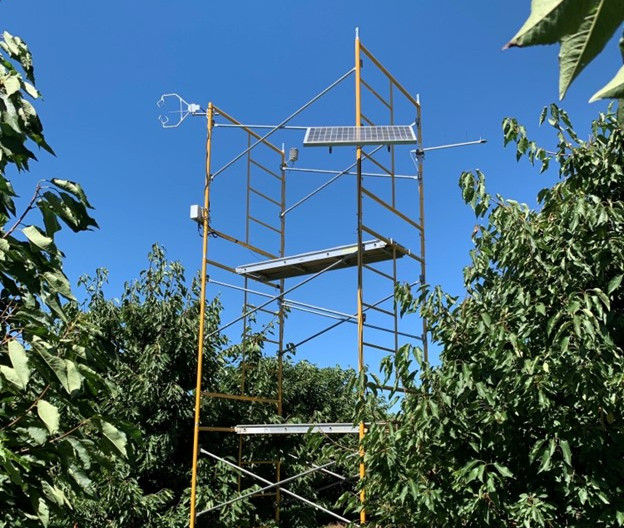In the 2023-2024 season, Chilean cherry exports totalled 413,979 t, with the Asian market (mainly China) as the main destination, accounting for 91% of total shipments. This means that Chilean sweet cherries are often transported for a minimum of 35 days, a rather prolonged period that can lead to physiological disorders.
In fact, the quality of cherries can be compromised mainly by three physiological disorders that occur during the post-harvest period: petiole browning, formation of cavities on the fruit and orange peel. This disorder is characterised by the formation of a rougher peel that, as the name suggests, resembles citrus fruit skin and has a defined, sculpted appearance.
The orange peel disorder can be found both in the distal, equatorial regions and in the cheeks of the fruit. The most susceptible cultivars include Sweetheart, Regina, Lapins and Santina. The objective of this study conducted by 3 Chilean universities was to determine the phenological time of onset of orange peel disorder in relation to several factors that could potentially influence the incidence of the disorder.
These include the position of the fruit on the tree, the natural microclimatic conditions of the plants, the effect of temperature and the interaction with relative humidity during storage. The first experiment focused on elucidating the ontogeny of orange peel disorder from the field and how the disorder develops during post-harvest storage in the cherry cultivars ‘Lapins’, ‘Kordia’ and ‘Regina’.
The second experiment, however, focused on the most susceptible cultivar, ‘Lapins’. The first experiment did not demonstrate a distinct response of orange peel incidence to natural variations in air temperature, vapour pressure deficit and solar radiation transmitted within the trees.
However, the cultivars showed substantial variations in the incidence, severity and timing of the disorder appearance. In ‘Lapins’, orange peel disorder occurred in the green phase before harvest, with an incidence of 33.7 per cent. In ‘Regina’ and ‘Kordia’, the incidences were negligible, 1.25% and 0%, respectively.

No disparities were observed in the incidence or severity of the disorder according to the point of harvest of the fruit in the canopy. In the second experiment, it was observed that the severity index (3.6) for orange peel disorder decreased as the relative humidity increased to 100%.
This study showed that the development of the physiological disorder orange peel starts in the pre-harvest stage, while the position of the fruit on the tree was not shown to be related to the incidence of the disorder, as non-significant differences were found between different sections of the tree.
In addition, the disorder is not correlated with water stress; however, the development of the disorder could be more critical under more environmentally stressed growth conditions, or when irrigation fails to adequately counteract evapotranspiration.
Probably, the orange peel disorder depends on the difference in osmotic potential between the mesocarp and the peel and on the transpiration process that might express itself differently from harvest to storage. Further research is needed, as the involvement of carbohydrates in the occurrence of the disorder in relation to osmotic potential is still unknown.
Source: Coye, Francisca, Calderón-Orellana, Arturo, Zoffoli, Juan P., & Contreras, Carolina. (2024). Influence of preharvest environmental conditions and postharvest relative humidity on the appearance of orange peel disorder in sweet cherry during fruit development and storage. Chilean journal of agricultural research, 84(6), 803-816. https://dx.doi.org/10.4067/S0718-58392024000600803.
Images: SL Fruit Service
Melissa Venturi
University of Bologna (IT)
Cherry Times - All rights reserved













